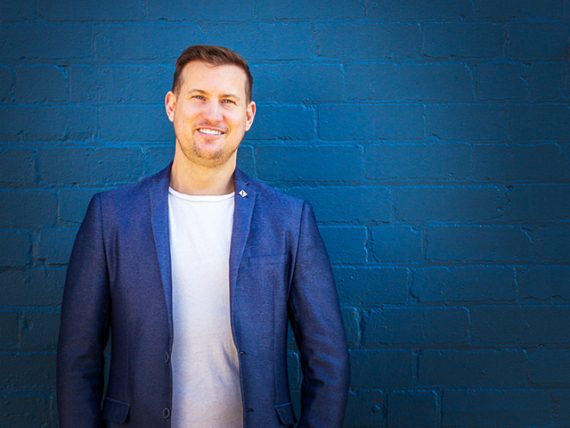
- January 13th, 2025
5 Key Predictions for the Australian Property Market in 2025
The year ahead promises exciting opportunities for property investors—if you know where to look. Here’s what to expect and how to make the most of it.
read moreOriginally published by realestate.com.au as 'Unfair criticism': The truth about the average Australian landlord by Emily Hutchinson, Rent Specialist and Property Journalist.
A tenant can live in a rental for years without ever coming into contact with their landlord, but they probably have a clear view in their mind of who the owner of their home is.
However, there's a wide array of landlords in Australia – and the most common type probably doesn't fit the stereotype.
Kasey McDonald is head of operations at property management firm :Different and said renters tend to believe their landlord is a high-income earner with lots of cash to burn.
"But this isn't always the case," Ms McDonald said.
"I definitely think there are some misconceptions about who the typical Aussie landlord is. Many property investors actually sit in the average earning brackets of approximately $80,000 per annum, per person, and $160,000 per annum if a combined income household."
Ms McDonald said property investors can come from all walks of life, backgrounds, professions and income brackets.
"They’re often just everyday Aussies who view property investment as a way to diversify their income streams and save for the future," she said.
In Australia, landlords account for a relatively small portion of the property market.
The Australian Bureau of Statistics' Survey of Income and Housing reported that four-in-five households don't invest in property at all. Instead, the overwhelming majority of people are either renters who don’t own any property, or are owner-occupiers who own their home, but no other dwellings.
In addition, the ABS data showed that only one-fifth of mortgaged owner-occupier households also own a rent-earning investment property.
Another 6% own a second home that they don't rent out, while just 7.5% of renter households own residential property that earns rental income, otherwise known as rent-vestors.
The typical Aussie landlord tends to be older, with seven-in-10 households that own an investment property aged between 35 and 64.
"The majority of our [landlord] customers are investors with one property (54%), with about a third having two or more properties, and some larger scale investors having four or more," Ms McDonald said.
According to the ABS, the majority of investors (70%) own a single investment property and the value of most investors’ portfolios is worth less than $1 million.
Shaun Polidano, who is the founder of a consumer demand marketing agency, recently purchased his first investment property in Melbourne to become a rent-vestor.
Mr Polidano said his motivation was not only seeing those around him move into the buying market, but wanting to set himself up for the future.
"I eventually want to buy in the area I'm renting in, for example South Yarra or around that kind of suburb, so I thought, how do I set myself up for that?"

"Buying properties and using the equity from those properties when they sell seems like the best way to eventually live in my dream home and suburb."
Shaun Polidano, member of The Property Mentors and rentvestor
As a renter himself, he said he aims to be a responsible landlord and is keen to make his tenants feel at home in his property."I feel quite lucky to get to this point in my life... my whole journey up until this point in time has been renting," he said."I think that making the rental comfortable for tenants adds value to the property and it's tax deductible. For example, the upstairs part of the townhouse didn't have an air-conditioner, but I thought, it's going to get too hot in here, so I added one in."It means I'm going to have a happy renter who wants to stay in there for a longer period of time."
ABS statistics show that it's not common for someone to own a second home, let alone multiple properties. Just shy of three-in-10 households with a mortgage own a second home.
Luke Harris is the chief executive officer of The Property Mentors, which provides coaching to property investment enthusiasts.
Mr Harris currently owns 32 properties and started his real estate journey when he was just 20, purchasing a house in Perth to flip.
"It was really hard to save the deposit even back then," he said. I had to do a lot of sacrificing.

"I mean, I ran a small electronic security business and really what I had to do to get a deposit was work six-and-a-half days a week, sometimes seven days a week.
"I didn't eat two minute noodles, but based on my cooking skills, I wasn't far from that. I didn't go out and drink, I had pre drinks before we went out – I was very careful with my money."
Mr Harris said that as he accumulated more properties, it became more of a managed business.
"When I had three or four or five properties, I knew everything about them. When you get to multiple properties, you've got multiple moving parts, and there's always something coming up for settlement. So, there's always a property going into settlement, or settling soon."
Mr Harris said that the best approach to take as a landlord is to go for a win-win situation with the tenant, so they're looking after it and are happy, while the landlord is accumulating rent.
"I look after my tenants because I understand the benefit of a win-win. It's not about extracting every last dollar out of a tenant."
Luke Harris, CEO of the Property Mentors and author of Property Fit
"Whenever there's a repair that needs to be done, the property managers are authorised just to get it done. There's no point in having a tenant having issues that are going to cause further maintenance later down the track."
Without investors, there would be far fewer properties for tenants to rent, which is an issue currently being experienced across the country as stock dwindles and prices rise.
“The rental market is under the microscope at the moment, with the extreme shortage of rental accommodation of real concern," said Tim McKibbin, chief executive officer of the Real Estate Institute of New South Wales.
“Upward pressure on rents is an obvious outcome of the lack of rental supply and the reality is that this situation is here to stay, until actual supply side solutions are implemented and begin to take effect.
“Landlords are bearing the brunt of criticism but are necessarily part of the solution.
“It’s too simplistic to point to high rents as the sole motivation to invest in property when there are other demands on landlords which make the proposition less attractive."
Mr McKibbin said this point is clear when considering how many landlords have exited the rental market in recent times.
Investors are slowly coming back, but not at a pace that can keep up with demand.
In June 2022, the total value of lending to investors was $10.5 billion, which was 6.3% lower month-on-month and 10% down on its historic peak.
While the value of lending to investors is high, their share of new lending in June 2022 was 33.8%, which is well below the historic peak of 45% seen in April 2015.
"Rental markets are tight around the country, and rents are growing quickly," PropTrack economist Angus Moore said.
"That will start to bring more rental stock into the market and ease how competitive conditions are. But it will take some time."
"Rental yields are starting to recover, after falling for the past couple of years. In that environment, we are starting to see investors return. The investor share of new lending is now more than a third – a significant and sharp increase compared to 2020."
Angus Moore, PropTrack economist

The year ahead promises exciting opportunities for property investors—if you know where to look. Here’s what to expect and how to make the most of it.
read more
Understanding the latest inflation figures and how they shape interest rate decisions—and property market opportunities.
read more
For the next 12 months, buyers in Victoria can save tens of thousands on stamp duty with a new government concession. Here’s how to take advantage of this incredible opportunity before it’s gone.
read more